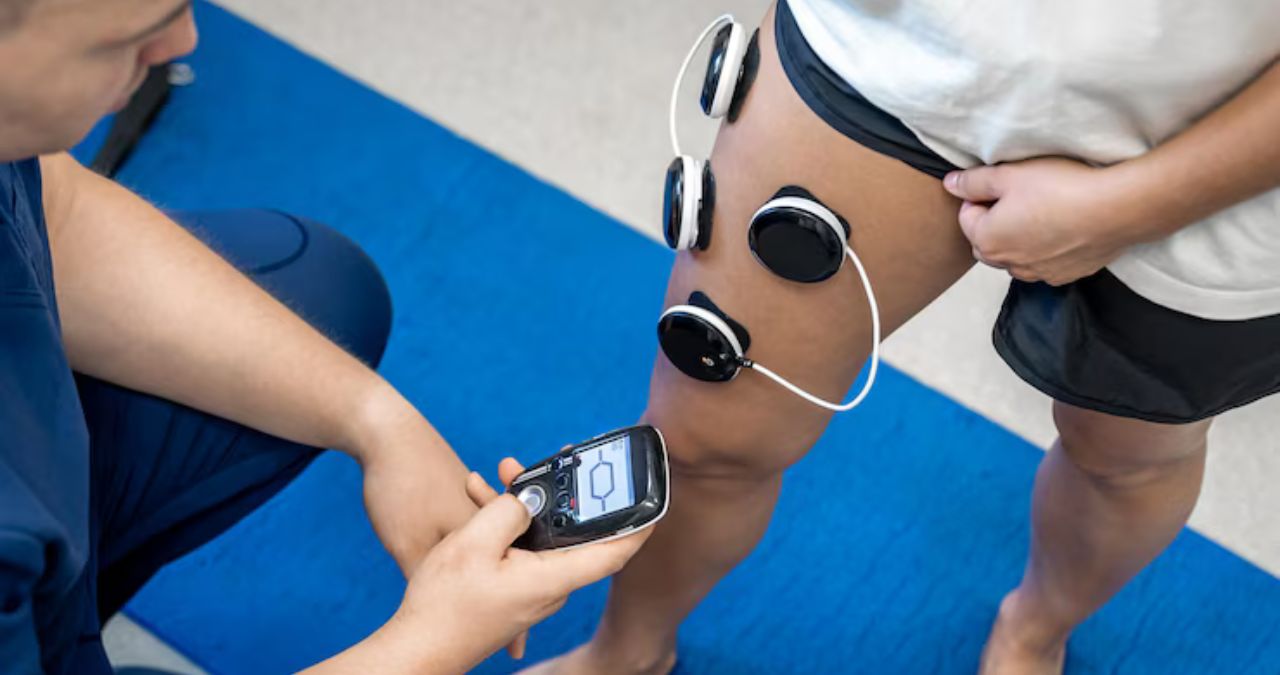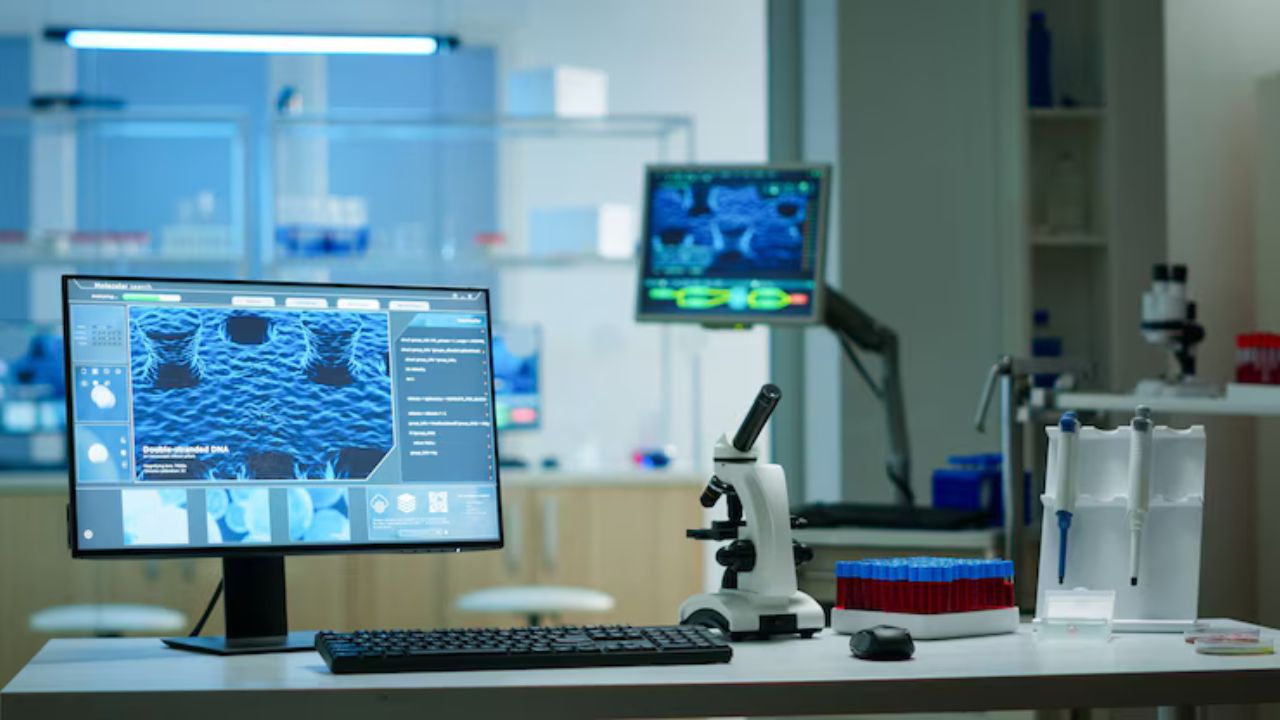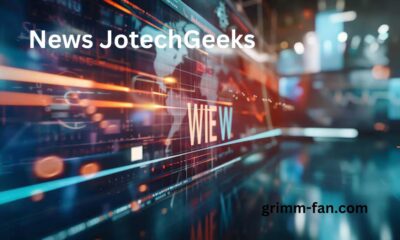TECHNOLOGY
From Sputnik to Smartphones A Journey Through Technology and History

In the past sixty-nine years, the world has witnessed an unprecedented wave of innovation and change. From the launch of the first satellite to the smartphones in our pockets, these technological advancements have shaped our lives in unimaginable ways. This blog post will take you on a fascinating voyage from 1954 to 2023, highlighting key technological milestones and their impact on society. Whether you’re a history buff or a tech enthusiast, this exploration is bound to captivate your interest and expand your horizons.
The Dawn of the Space Age
In 1957, just three years after our starting point, the Soviet Union launched Sputnik 1, the world’s first artificial satellite. This milestone marked the beginning of the Space Age and the intense space race between the United States and the USSR. The successful launch of Sputnik triggered a chain reaction of technological advancements, including advancements in rocket technology and satellite communications. These innovations not only revolutionized space exploration but also laid the groundwork for modern GPS systems and global communication networks.
The fear of falling behind pushed the United States to establish NASA in 1958, propelling the country into a new era of space exploration. The competition between superpowers spurred rapid developments in physics, engineering, and computing. Computers became more sophisticated, shrinking in size while increasing in capability. The ripple effects of the space race extended beyond national pride, influencing education, research, and international collaboration.
The Rise of Personal Computing
Fast forward to the 1980s, when personal computers began making their way into homes and offices. Companies like Apple and IBM introduced machines that were more affordable and user-friendly, making computing accessible to the masses. The introduction of graphical user interfaces (GUIs) further simplified interactions with computers, allowing individuals to perform tasks they never thought possible.
Personal computing transformed industries, from education and business to entertainment and communication. Word processors replaced typewriters, spreadsheets improved data management, and video games became a new form of recreation. The internet, initially a network for researchers and government agencies, began to gain commercial traction, foreshadowing the connectivity boom of the 1990s.
The Internet Revolution
The 1990s witnessed a digital revolution as the internet became a household name. The World Wide Web, developed by Tim Berners-Lee in 1989, opened up a world of information and opportunity. People could now access news, research, and entertainment with just a few clicks. Email became a primary mode of communication, shrinking distances between people across the globe.
E-commerce emerged as a powerful force, reshaping how businesses operated and consumers shopped. Companies like Amazon and eBay changed the retail landscape forever, offering convenience and variety at the click of a button. The internet also gave rise to social media platforms, enabling people to connect, share, and collaborate in unprecedented ways.
Mobile Technology Takes Center Stage
The early 2000s brought a new wave of technological advancements, spearheaded by the rise of mobile technology. The introduction of smartphones revolutionized communication, turning devices into portable powerhouses of information and entertainment. With cameras, GPS, and internet access, smartphones became essential tools for daily life, blurring the lines between personal and professional use.
Mobile apps transformed industries, from transportation with ride-sharing services to health with fitness trackers. The convenience of having a world of information at one’s fingertips further fueled the demand for faster and more reliable internet connections. The transition from 3G to 4G networks enabled seamless streaming, video conferencing, and online gaming, setting the stage for the 5G era.
The Era of Artificial Intelligence
In the past decade, artificial intelligence (AI) has emerged as a game-changer in the tech world. AI technologies, from machine learning algorithms to natural language processing, have permeated various industries, transforming how we live, work, and interact. Virtual assistants like Siri and Alexa have become commonplace, providing hands-free assistance in managing daily tasks.
Healthcare has seen significant advancements through AI-driven diagnostic tools and personalized treatment plans. In finance, AI algorithms enable efficient data analysis and fraud detection. Autonomous vehicles and drones are reshaping transportation and logistics. The potential of AI continues to expand, promising solutions to complex challenges and ethical considerations.
Technological Impact on Society
The technological innovations of the past decades have had profound impacts on society, both positive and negative. On one hand, technology has facilitated globalization, connecting people and cultures like never before. Access to information and education has expanded, empowering individuals and fostering creativity. Remote work and telecommuting have become viable options, offering flexibility and reducing commuting stress.
On the other hand, concerns about privacy, data security, and digital addiction have emerged. Social media platforms, while connecting people, have also raised issues of misinformation and mental health. The rapid pace of technological change has left some individuals and communities struggling to keep up, exacerbating inequalities.
The Role of Innovation Hubs
Throughout history, innovation hubs have played a crucial role in driving technological progress. Cities like Silicon Valley, Seattle, and Shenzhen have become epicenters of creativity and entrepreneurship. These regions attract talent, investment, and collaboration, fostering an environment where groundbreaking ideas thrive.
Innovation hubs act as catalysts for technological advancement, nurturing startups, research institutions, and established tech giants. They provide a platform for experimentation and knowledge exchange, accelerating the development and adoption of new technologies. The success of innovation hubs highlights the importance of fostering supportive ecosystems that encourage risk-taking and collaboration.
Sustainability and Technology
In recent years, sustainability has become a key consideration in technological development. The environmental impact of tech manufacturing, energy consumption, and electronic waste has prompted a shift toward greener practices. Companies are investing in renewable energy sources, energy-efficient designs, and recycling initiatives to minimize their carbon footprint.
Technological solutions are also being harnessed to address environmental challenges. Smart grids optimize energy distribution, reducing wastage. IoT sensors monitor air and water quality, enabling timely interventions. Electric vehicles and clean energy technologies are reshaping transportation and energy sectors, paving the way for a more sustainable future.
The Future of Connectivity
As we look to the future, connectivity will continue to be a driving force in technological advancement. The rollout of 5G networks promises faster speeds, lower latency, and enhanced reliability. This next-generation connectivity will enable innovations like virtual and augmented reality, IoT, and smart cities.
The expansion of connectivity will empower industries to create new business models and services, enhancing efficiency and user experiences. However, it will also require robust cybersecurity measures to protect sensitive data and ensure privacy. The ongoing evolution of connectivity will shape the way we interact with technology and each other.
Ethical Considerations in Technology
With great power comes great responsibility. The rapid advancement of technology raises ethical questions about privacy, bias, and accountability. Ensuring that technology is developed and used ethically requires collaboration between governments, industries, and individuals.
Transparency in AI algorithms, data privacy regulations, and diversity in tech development are essential for building trust in technology. Ethical frameworks and guidelines can help prevent misuse and ensure that technological advancements benefit society as a whole. Addressing these considerations will be vital as technology continues to shape our lives.
The Human Element in Technological Progress
Amidst the excitement of technological innovation, it’s important to remember the human element. Technology is a tool, and its impact depends on how we choose to use it. While technology can automate tasks and improve efficiency, human creativity, empathy, and intuition remain irreplaceable.
The collaboration between humans and machines holds the potential to solve complex problems and create meaningful experiences. By leveraging technology to augment human capabilities, we can harness its full potential for positive change. The synergy between humans and technology is the key to future progress.
Conclusion A Journey Worth Celebrating
From the launch of Sputnik to the ubiquity of smartphones, the technological and historical journey from 1954 to 2023 is a testament to human ingenuity and innovation. Each advancement has paved the way for new possibilities and transformed the world in profound ways.
As we look ahead, the pace of change shows no signs of slowing down. By staying informed, adaptable, and responsible, individuals and organizations can continue to harness the power of technology for the betterment of society. The future is a canvas waiting to be painted with innovation, and it’s up to us to shape it into something remarkable.
TECHNOLOGY
Exploring the Aesthetic: Isabelle Lynn Kertzie’s Instagram Journey

Isabelle Lynn Kertzie has taken Instagram by storm, drawing in an audience captivated by her unique aesthetic. With a keen eye for detail and an innate sense of style, she transforms everyday moments into visual poetry. As you scroll through her feed, it’s clear that each post is more than just a snapshot; it’s a carefully curated piece of art that resonates with thousands. But how did this ordinary social media experience evolve into the stunning journey we see today? Let’s delve deeper into Isabelle’s Instagram adventure and uncover what makes it so special.
From ordinary posts to curated aesthetic: Kertzie’s evolution on Instagram
Isabelle Lynn Kertzie’s Instagram journey tells a captivating story of transformation. Initially, her posts reflected everyday moments—snapshots of life that resonated with many.
As she explored her creative side, those ordinary images began to shift. Each post became more intentional, weaving together themes and colors that spoke to her unique style. Kertzie embraced visual storytelling, moving away from random uploads.
Her feed blossomed into a curated aesthetic that caught the eye of followers everywhere. Every photo seemed purposeful and thought-provoking—a reflection of not just what she saw but how she felt.
This evolution didn’t happen overnight; it was a gradual process filled with experimentation and self-discovery. With each new post, Isabelle showcased not only artistry but also an evolving identity within the vast landscape of social media culture.
The impact of Kertzie’s aesthetic on her followers and the social media community
Isabelle Lynn Kertzie’s Instagram aesthetic has become a vibrant source of inspiration for many. Her carefully curated visuals resonate deeply with followers, creating a sense of connection and community.
Each post invites her audience into a world filled with color, texture, and emotion. This artistic approach encourages others to explore their own creativity. Followers often find motivation in the way she presents everyday moments through an imaginative lens.
Kertzie’s aesthetic also fosters engagement within the social media landscape. People flock to her posts not just for visual pleasure but also for shared experiences and ideas. The comments section buzzes with conversation, as fans exchange thoughts on their favorite elements or styles inspired by her work.
In this era of constant scrolling, Isabelle’s feed stands out as a reminder that beauty can be found in both simplicity and complexity alike.
Behind the scenes: How Kertzie creates and maintains her aesthetic
Isabelle Lynn Kertzie’s aesthetic is not just a happy accident; it’s the result of careful planning and creativity. She dedicates time to curating her feed, selecting colors and themes that resonate with her personal style.
Kertzie often finds inspiration in everyday life—nature, fashion trends, or even art. Each photo captures a moment that speaks to her vision. She pays attention to lighting and composition, ensuring each post looks polished yet authentic.
Editing plays a significant role too. Kertzie utilizes various apps to enhance her images while keeping them true to her brand identity. Consistency is key; she sticks to specific filters that unify her visuals.
Her followers appreciate the effort behind every post, which fosters deeper connections. This engagement inspires Kertzie further as she continues refining her unique aesthetic journey on Instagram.
The challenges of maintaining an aesthetic and staying true to oneself
Maintaining a distinct aesthetic on Instagram can be both rewarding and challenging. For many, the pressure to keep up with trends can overshadow personal creativity.
Isabelle Lynn Kertzie navigates this delicate balance daily. While she curates stunning visuals, there’s always that nagging worry about authenticity. Followers expect consistency, yet each post is a reflection of her evolving self.
The struggle often lies in wanting to please an audience while staying true to individual expression. Authentic moments might clash with the polished vibe that garnered attention in the first place.
Moreover, inspiration can ebb and flow unexpectedly. What once felt vibrant may begin to feel stale or forced over time.
It’s easy to lose sight of why one started sharing content originally amidst external expectations and pressures from the social media landscape. The heart of it all remains: balancing artistic vision with genuine self-expression takes constant effort and introspection.
Lessons learned from Kertzie’s Instagram journey
Isabelle Lynn Kertzie’s Instagram journey offers valuable insights into the world of social media. One key lesson is the importance of authenticity. Followers connect more deeply when they sense genuine passion behind content.
Additionally, consistency plays a crucial role in building an engaged community. Regularly posting cohesive visuals and themes keeps followers coming back for more. This effort fosters loyalty over time.
Embracing creativity is another takeaway from her experience. Kertzie showcases that experimentation can lead to unexpected successes, encouraging others to break free from conventional norms.
Balancing personal expression with audience expectations is vital. While it’s tempting to cater solely to trends or likes, staying true to oneself ultimately resonates most powerfully with followers.
Conclusion: The power of aesthetics in
The journey of Isabelle Lynn Kertzie on Instagram is a testament to the transformative power of aesthetics. Her evolution from ordinary posts to a carefully curated aesthetic has captured the attention of many. It’s more than just visuals; it’s about storytelling and connection.
Kertzie’s impact resonates deeply within her community, inspiring followers to embrace their own creative journeys while fostering a sense of belonging. Behind her stunning feed lies dedication, planning, and an unwavering commitment to authenticity.
Maintaining such an aesthetic brings its unique challenges. Yet, Kertzie navigates these hurdles with grace, reminding us that staying true to oneself is paramount in the ever-changing landscape of social media.
Her story offers valuable lessons for anyone looking to enhance their online presence. Aesthetic isn’t merely surface-level; it’s about expressing identity and connecting with others who share similar passions.
Isabelle Lynn Kertzie’s Instagram serves as a powerful reminder: aesthetics have the ability not only to beautify our feeds but also to enrich our lives through shared experiences and creativity.
TECHNOLOGY
What Is Atlas Physical Therapy and Why Is It Trending?

Atlas Physical Therapy has steadily become a standout in the healthcare sector due to its commitment to personalized, evidence-based care. Rooted in holistic healing and functional movement science, Atlas offers a distinct and refreshing approach to recovery and rehabilitation. Whether you’re recovering from surgery, managing chronic pain, or aiming for peak athletic performance, Atlas has gained popularity for doing more than just “fixing injuries”—they’re transforming lives.
The growing attention to physical therapy as a preventative and restorative care option places Atlas at the center of a societal shift toward non-invasive, empowering, and sustainable health practices. From athletes to seniors and children, the results speak volumes—and so do the patients.
The Vision and Philosophy Behind Atlas Physical Therapy
The founding philosophy of Atlas Physical Therapy is simple but powerful: “Movement is medicine.” Built on the understanding that every individual’s journey is unique, Atlas emphasizes human connection, scientific precision, and emotional support.
Rather than taking a one-size-fits-all approach, the therapists at Atlas tailor each session, adjusting techniques based on progress, pain levels, and personal goals. Their core values—empathy, innovation, transparency, and trust—are deeply woven into their practice, ensuring that patients don’t just feel treated, but truly cared for.
Comprehensive Services Offered at Atlas Physical Therapy
Atlas Physical Therapy offers a wide array of services that address different needs, including:
-
Orthopedic physical therapy
-
Neurological rehabilitation
-
Sports injury recovery
-
Pediatric physical therapy
-
Geriatric mobility therapy
-
Post-surgical rehabilitation
-
Dry needling and cupping
-
Manual therapy
-
Functional movement screening
-
Telehealth and home exercise programs
These services are designed to cater to short-term goals (like healing an injury) and long-term wellness strategies (like posture correction and chronic pain management).
Evidence-Based Therapies Practiced at Atlas
Evidence drives every decision at Atlas. The team incorporates the latest peer-reviewed research into therapy plans. Modalities include:
-
Therapeutic ultrasound
-
Neuromuscular electrical stimulation (NMES)
-
Joint mobilization and manipulation
-
Functional dry needling
-
Kinesiology taping
-
Corrective exercise programming
Therapists stay updated through continuous professional development, ensuring best-in-class treatment at every visit.
Atlas Physical Therapy’s Unique Areas of Specialization
Atlas doesn’t just offer general physical therapy—they go deep into specialties that require advanced skill sets, such as:
-
Vestibular therapy for balance and dizziness disorders
-
Temporomandibular joint (TMJ) dysfunction treatment
-
Concussion recovery programs
-
Women’s health physical therapy (e.g., pelvic floor therapy)
-
Post-stroke mobility training
These specialized programs differentiate Atlas from clinics that merely address surface-level symptoms.
What Conditions Does Atlas Physical Therapy Treat?
Atlas Physical Therapy treats a wide range of conditions, such as:
-
Lower back pain and sciatica
-
Neck and shoulder discomfort
-
Knee injuries and arthritis
-
Post-surgical complications
-
Carpal tunnel syndrome
-
Tendinitis and bursitis
-
Scoliosis
-
Plantar fasciitis
-
Balance and coordination issues
By targeting root causes—not just symptoms—Atlas helps patients regain control and confidence in their bodies.
Conclusion: Is Atlas Physical Therapy the Right Choice for You?
If you’re looking for a partner in health who sees you as more than just a diagnosis, Atlas Physical Therapy may be your best decision. Their modern approach blends science, compassion, and customization to deliver real results. Whether you’re an athlete aiming for excellence, a parent seeking care for your child, or someone recovering from surgery—Atlas meets you exactly where you are.
Your body deserves a trusted guide. At Atlas Physical Therapy, you’re not just healing—you’re evolving.
TECHNOLOGY
Telemetryczny: Understanding Telemetry and Its Applications

Introduction
The term “telemetryczny” (Polish for “telemetric”) refers to systems and technologies that enable the remote measurement and transmission of data. Telemetry plays a crucial role in various industries, including healthcare, automotive, aerospace, and environmental monitoring. This article explores the concept of telemetry, its applications, benefits, and future trends.
What Is Telemetry?
Telemetry is the automated process of collecting data from remote or inaccessible sources and transmitting it to receiving equipment for monitoring and analysis. The word “telemetryczny” derives from Greek roots:
-
“Tele” (remote)
-
“Metron” (measure)
Modern telemetry systems use sensors, wireless communication, and data processing tools to provide real-time insights.
How Telemetry Works
A typical telemetry system consists of:
-
Sensors – Detect physical parameters (temperature, pressure, speed, etc.).
-
Transmitters – Send collected data via wired or wireless networks (Wi-Fi, Bluetooth, satellite).
-
Receivers – Capture and process incoming data.
-
Data Analysis Tools – Interpret and visualize data for decision-making.
Types of Telemetry Systems
| Type | Description | Applications |
|---|---|---|
| Wireless Telemetry | Uses radio, satellite, or cellular networks | IoT, wildlife tracking |
| Wired Telemetry | Relies on physical connections (Ethernet, fiber optics) | Industrial automation |
| Acoustic Telemetry | Uses sound waves underwater | Marine biology |
| Optical Telemetry | Transmits data via light signals | Medical devices, aerospace |
Applications of Telemetry (Telemetryczny)
1. Healthcare & Medical Telemetry
-
Remote Patient Monitoring (RPM) – Tracks vital signs (ECG, blood pressure) in real time.
-
Implantable Devices – Pacemakers and insulin pumps use telemetry for adjustments.
2. Automotive & Telematics
-
Vehicle Tracking – GPS telemetry helps in fleet management.
-
Connected Cars – Monitors engine performance and driver behavior.
3. Aerospace & Defense
-
Satellite Telemetry – Collects data from space missions.
-
Drone Monitoring – Ensures flight stability and navigation.
4. Environmental Monitoring
-
Weather Stations – Measures temperature, humidity, and wind speed.
-
Wildlife Tracking – Uses GPS collars to study animal migration.
5. Industrial & Manufacturing
-
Predictive Maintenance – Detects equipment failures before they occur.
-
Smart Grids – Monitors electricity distribution efficiently.
Benefits of Telemetry Systems
✅ Real-Time Data Access – Enables instant decision-making.
✅ Cost Efficiency – Reduces manual monitoring efforts.
✅ Enhanced Safety – Critical in healthcare and aerospace.
✅ Scalability – Adaptable for small IoT devices to large industrial systems.
Challenges in Telemetry
⚠ Data Security – Risk of cyberattacks on transmitted data.
⚠ Signal Interference – Wireless telemetry may face connectivity issues.
⚠ Power Consumption – Battery life is a concern for remote sensors.
Future Trends in Telemetry
🔮 5G Integration – Faster and more reliable data transmission.
🔮 AI & Machine Learning – Predictive analytics for smarter telemetry.
🔮 Edge Computing – Reduces latency by processing data closer to the source.
Conclusion
The term “telemetryczny” encompasses a wide range of technologies that revolutionize data collection and analysis. From healthcare to space exploration, telemetry enhances efficiency, safety, and innovation. As technology advances, telemetry systems will become even more integral to our connected world.
-

 BUSINESS7 months ago
BUSINESS7 months agoPrince Narula Digital PayPal Success: Transforming Online Payments
-

 ENTERTAINMENT7 months ago
ENTERTAINMENT7 months agoHighlights and Analysis: WWE SmackDown Episode 1491 Recap
-

 ENTERTAINMENT10 months ago
ENTERTAINMENT10 months agoWWE SmackDown Episode 1488 Delivers a Knockout Performance
-

 LAW9 months ago
LAW9 months agoAn Intriguing Journey into the Life of Jeff Tietjens
-

 videos9 months ago
videos9 months agobad hair day episode 1 a sore subject
-

 HOME1 year ago
HOME1 year agoMaximizing Basement Space: Design Tips from Top Basement Renovation Contractors
-

 CELEBRITY2 years ago
CELEBRITY2 years agoDiscovering Edgardo Canales The Life and Journey of Adria Arjona’s Husband
-

 News1 year ago
News1 year agoNews JotechGeeks Takes the Spotlight in Tech News World
